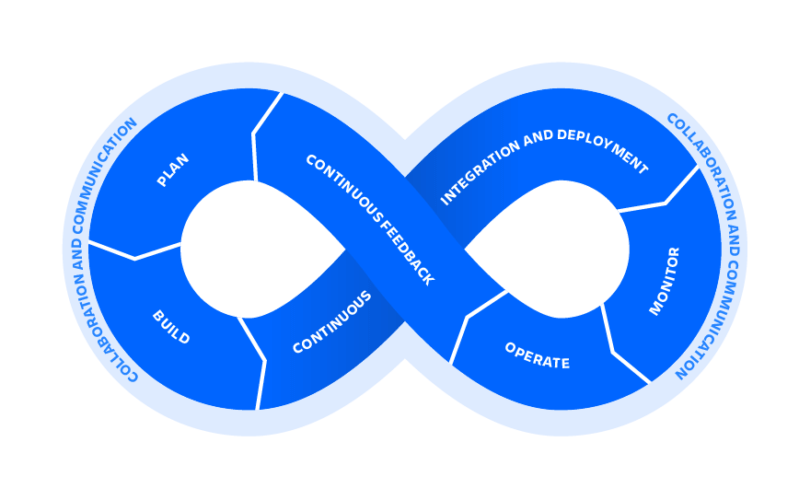To stay ahead of the curve, businesses need to have solutions up and running as effectively as possible because any downtime can drop a company’s productivity. The good news – there’s an easy way to get control over your IT operations without building a large in-house team of experts.
This way is called IT managed services.
Managed IT services give you the support you need for your critical IT technology — development, networks, servers, security, quality assurance, etc. — without the cost and hassle of managing everything in-house.
For instance, it is estimated that a successful introduction of managed services is able to reduce IT cost by 25-45% and boost operational efficiency by 45-65%.
But these are not the only advantages you get from partnering with a managed IT service provider (typically referred to as an MSP) .
In this article, we will:
- analyse the top problems that make businesses opt for managed services (so you can compare whether your company faces them);
- review major IT services you can receive;
- clear up what types of companies can benefit from managed IT services.
4 main problems solved by a good managed IT service provider
#1. High costs of maintaining the in-house IT team
Investmenting in technologies and qualified IT staff has never been (and cannot be) cheap.
However, managed IT services are often less expensive than owning an in-house department. Just count up the overall costs of hiring an IT expert including recruiting, payroll, taxes, employee benefits, office space, equipment, insurance, overtime pay, training, retaining, etc. All this turns out to be a luxury most companies cannot afford.
Managed IT service providers (MSPs) give you immediate access to a pool of qualified specialists with expertise gained from dozens of projects like yours. You obtain not just experts but a well-knit team that is managed from the vendor’s side. This improves productivity and streamlines processes right off the bat.
Moreover, you get the chance to get a tailor-made offer from the most of the IT managed service providers.
MindK provides customers with a service agreement customized to specific company needs. For example, you might decide that you can manage your infrastructure in-house, but you’d like the service provider to undertake web app development, etc.
In short: our clients never have to buy more than they really need or want.
#2. Slow innovation
New technologies and innovations are the most costly investments in the IT industry. In-house teams need to constantly follow new technology advancements taking valuable resources away from progressing your business.
If you can’t adapt to the changing technologies, you’re setting up your business to be disrupted by competitors.
While adapting can be challenging for in-house IT teams, an IT managed service is built to do exactly that, adapt. They provide companies with access to cutting edge technologies right from the start.
A lightning-fast adaptation paired with access to more resources, robust working approach, and experience gained from various projects translates into new technological advancements that can be implemented almost immediately.
This alone can justify the price of a managed service provider.
#3. Scalability challenges
Scalability is critical to maintain the company’s growth. In the fast-changing business environment, your company has to scale-up or scale-down resources on demand.
While it’s quite a challenge to react quickly to scalability needs in-house, managed IT services can provide the required support to handle the growth at short notice. No matter whether you need an in-house team extension or a (fully-remote) dedicated team to reach your goals.
What’s more, hiring an IT service partner to augment your regular staff is the perfect solution to free-up or reallocate the resources.
In such a way, your team can focus on strategic goals, for example, setting the targets you want to achieve in the future as your business grows and changes.
#4. Break-fix approach
Quite often, companies reach out to third-party providers when some critical problem appears. This can lead to decreased performance and additional costs for a business.
When you opt for a managed IT service, you turn from putting out the fires to preventing them (entirely). Using a fire extinguisher is always better (and cheaper!) than rebuilding your house. This is exactly what a managed IT service provider does, namely, supports you while minimizing the issues that can negatively influence your company’s success.
It directly relates to such services as DevOps that guarantees your infrastructure is secure, or quality assurance that makes certain that your product is running well and bug-free.
In such a way, we walk up to the question: what exactly are the IT services that a company can receive from a vendor?
Types of IT help your company receive “as-a-service”
As IT managed services is quite a broad notion, you’ll have to decide what kind of technical support is required. The main challenge here is that there is no one-fits-all proposition and you have to get acquainted with a number of services before you find the one you need.
For example, MindK provides a number of IT managed services, the most essential among them are:
DevOps managed services. This concept can be thought of like a continuous loop. On one end there is IT development, on the other end – IT operations. When these ends work effectively together, they form a consistent loop of development and deployment.
Source: atlassian.com
Often, when companies try to use in-house resources to implement it, they run into roadblocks along the way like lack of infrastructure or knowledge. The slowdown or interruption narrows down all the advantages of DevOps implementation. On the contrary, the managed IT service provider possesses the expertise and resources needed to reach your goals. Under this service you can receive:
- setting up the infrastructure in the cloud and its support;
- automating development and production environments;
- implementation of continuous integration and continuous deployment (CI/CD pipeline) that helps to avoid any issues in the planning, design and deployment;
- carrying out thought-out disaster recovery plans;
- servers security and monitoring, etc.
It is just a small range of work the DevOps engineers can perform for your business.
Read next – DevOps strategy: the secret to high-performing IT teams
Automated quality assurance (QA). By integrating QA as one of the IT managed services, you gain access to a dedicated team of professionals who are in charge of the quality of your software product. Hiring an IT managed service provider can reduce your overall testing costs, while enhancing the end product.
You’ll receive expert help in developing a testing strategy, writing test cases, autotests and maintaining the top quality of the product during the whole development process. The ability of a managed QA provider to identify defects early in development speeds up the process of getting your product to market. When coupled with DevOps, it can add an additional layer of security by testing your system for vulnerabilities with each update.
Managed software development. In this case, your chosen vendor becomes responsible for the whole product/software development lifecycle and the final result.
The main advantages of the managed software development service, and all other IT services, is that you receive a managed team who has worked together before (not an assembled group of individual contractors) and don’t need to spend time, money, and resources on in-house team members or infrastructure to produce a fully functioning software product.
Ultimately, this accelerates software development and gives you breathing room for other critical tasks.
Read next – 10 top mistakes to avoid when outsourcing web development projects
Is it true that only small companies can benefit from IT Managed services?
There is an established opinion that small businesses are the only ones who can benefit from partnering with managed service providers, but that is not true.
In fact, IT managed services have already proven to be a cost-efficient and rational solution for both small and medium-sized companies, as well as large enterprises.
Sure, small-scale and mid-sized enterprises often cannot afford in-house IT departments, and gain immediate access to certified IT professionals that larger companies may possess.
Although large companies have internal IT resources, they also require professional help from MSPs as an extension to their in-house teams. It helps ease the pressure on internal personnel allowing them to focus on strategic objectives or projects, like implementing new systems or streamlining existing processes.
MSPs also complement the in-house experience, especially when it comes to emerging technologies (cloud computing, virtualization, etc.).
As you can see, companies of all sizes can receive benefits from working with a managed IT services provider. The most notable are:
- speedy access to expertise that often cannot be found in-house;
- reliability of a dedicated team focused on your IT needs and managed effectively;
- increased speed of development thanks to advanced IT processes and best practices gained from previous projects;
- higher in-house productivity due to a reduction in time-consuming administrative tasks.
However, to reap any of these advantages, you need to find an IT partner who will give you the attention you require to reach your goals. We have already detailed how to make your project a success when working with IT services companies, so check it out to avoid the possible pitfalls.
Thinking about hiring a top-notch Managed IT Service provider right now?
Before you begin to choose an MSP, you need to identify your company’s needs and internal IT gaps. It’s worth noting that many people think the goal of these services is to substitute the entire departments from their organization. While some companies will choose this option, MSPs can also work in tandem with your existing IT teams, providing access to a more robust infrastructure, reducing the day-to-day workload, and improving the quality of software products.
If you are undecided or want a team of professionals to help you thrive in the digital age, just drop us a line – our experts will guide you through the process and answer all your questions. We have dozens of projects we are proud of and can make yours the next in the list.






